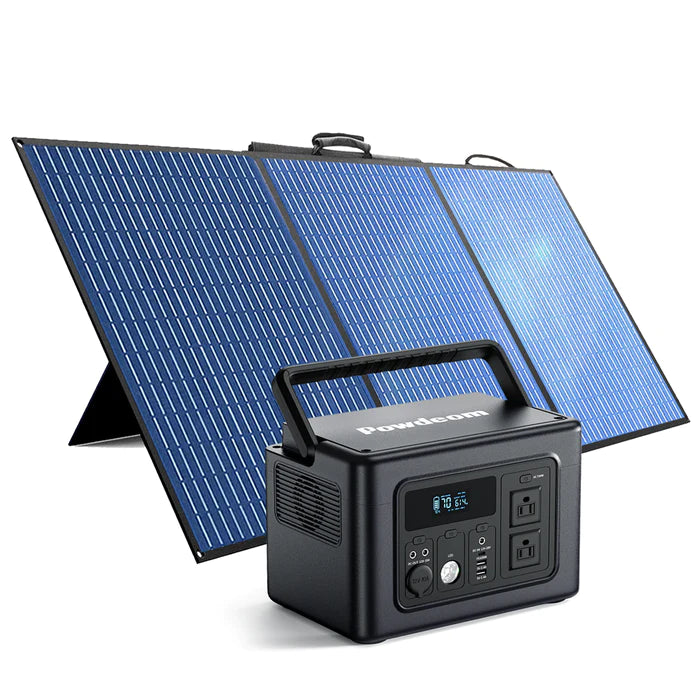The introduction of rapid charging technology has significantly improved the charging process. It's an easy method to make sure they have enough juice to last all day long. USB Power Delivery, sometimes known as USB PD, is one of the most widely used specifications for rapid charging. It quickly provides power to a variety of USB-connected devices.
Once solely used for data connection with limited charging capabilities, USB is now widely utilized for capturing various devices. That's a lot of laptops, phones, and other gadgets right there.
Nonetheless, this might cause complications since certain widgets and connections aren't designed to work with others' ports. Furthermore, USB kinds vary in their transfer rates, adding further complexity. For example, PD 3.0 is quicker than USB 2.0, but Type C is much faster. Consumers are forced to purchase new cables and gadgets to keep up with the latest USB standards, resulting in a substantial amount of electronic trash.
What Is A USB PD Charger?
USB, short for "Universal Serial Bus," gives USB-PD its name. This is the same technology that allows you to connect a mouse, keyboard, or another device to your computer, so you should be acquainted with it. However, the "PD" component is the new addition; it indicates "Power Delivery."
What does "power delivery" mean, and what does it accomplish? It aims to provide power to your electronics more quickly than a standard USB cable. The device adheres to the USB-C standard, which is supported by a wide range of new gadgets.
Some very powerful USB-C devices can be powered by a USB-PD charger because of their ability to provide up to 100 watts of power. You wouldn't want to hook a 100-watt wire into your phone since it would do more damage than good. That's why it's essential for the cable to "hear" how much power the gadget requires and then tailor the current it sends.
Thanks to USB-widespread C's adoption and USB-flexible PD's power delivery, you can now find a single cable that can connect to and charge almost any modern electronic device.
What's The Benefit Of A USB PD Charger
What sets USB Power Delivery apart as a frontrunner among quick-charging technologies? It's not just compatible with a wide range of gadgets; other advantages to using it make it well worth the cost. Okay, then, let's go ahead and see what they are.
- The enhanced standard power levels of up to 100W are one of the most significant advantages of USB PD.
- The charging direction is also not set in a USB PD charger. Power may be shared across devices by allowing the device with power (host or peripheral) to do so.
- Furthermore, a USB Power Delivery (PD) charger distributes power efficiently between many It does this by letting each gadget draw only as much juice as it requires. When necessary, it can transfer a more significant amount of electricity.
- Overcharging is prevented via USB PD. The USB-C cable used for Power Delivery has communication pins that enable the powered devices to specify the amount of power they need. The Power Rules allow for multiple current agreements between the charger and the device.
- The gadget can receive instructions for intelligent and adaptable power management by connecting to the hub.
The Evolution Of The PD Charger
The development of USB PD has progressed dramatically since its introduction. Let's check out a few of its variants.
- USB PD 1.0
Power transfer of up to 100W using a single USB cable became possible with the release of USB Power Delivery 1.0 in 2012. Cables and connections that are compatible with USB PD 1.0 have particular requirements. It looked like a standard USB cable connection on the outside, but the inside was wired somewhat differently.
Standard USB cables require particular ports. However, PD-compliant wires may be used with any USB port.
- USB PD 2.0
USB Power Delivery 2.0, released in 2014, mandated USB Type C ports and updated the associated power standards from USB Power Delivery 2.0 revision 1.2. The power rules require a range of standard voltages and currents to facilitate more consistent power distribution and use across devices.
- USB PD 3.0
The third version of the USB-Performance-Booster (PD) was made available to the public in 2015. It paves the way for more sophisticated use of Type C power features and capabilities. USB PD 3.0's role-changing ability is one of its most notable new features.
Here's an illustration of a role reversal in action. A laptop that charges another battery pack through USB will most likely die. In the past, reconnecting the cord was the only option to restore power from the external battery. Type A (power input) and Type B (power output) ports were required for the internal battery to function.
This is not an issue with the USB Type C charger because of the inherent capability of role switching. In a power-switch scenario, the computer and the external battery may switch places rapidly. The laptop may switch roles and become an energy consumer. The opposite direction of charging would be used for the storm. There wouldn't be any need to flip the cable over or use extra ports for this to occur.
The ability to switch roles not only facilitates data transfer but also charging. Furthermore, data transmissions should not be disrupted when authority shifts. In other words, data traffic may stay one-way even while the electricity is switching directions.
How Fast Is PD 3.0?
USB Implementers Forum created the PD 3.0 rapid charging standard. Any company may support it since it's a standard element of USB technology. To use PD 3.0 technology in their products, manufacturers don't have to pay any additional license costs. They need to conform the battery and electronics to the PD 3.0 standards.
The abbreviation "PD" means "power delivery." With this technology, a power output of up to 100 watts is possible beyond the needs of even the most powerful smartphones. Although there are drawbacks, there are also substantial benefits to using such a high wattage. It may be used to charge laptop computers, for instance. It is utilized in all of Apple's latest MacBooks, and the computers may be used even while they are charging. You should anticipate substantially higher speeds than with a regular USB cord.
Wattage levels of 7, 15, 27, and 45, in addition to the maximum of 100, are supported. There is a wide range of voltages supported within each wattage class. In the 27-watt field, for instance, you have the option of charging at 5, 9, or 15 volts. Because of this, the PD benchmark is quite flexible. There are a lot of leeways for device manufacturers to create unique products while achieving top performance.
A Guide to Buying a Power Delivery Charger
If you're familiar with USB PD, the following advice should help you choose a suitable PD charger.
Input power requirements for powered differential (PD) devices may vary widely. Therefore, consider how much power the gadget can accept as input. Remember this when settling on a PD charger.
In general, PD chargers are categorized as either 18W, 30W, 45W, or 60W and higher.
- A quick 18W Power Delivery charger is suitable for most smartphones and certain tablets
- Most tablets and laptops can get full power using 30W PD chargers
- In terms of power output, 45W is still a rarity
- The 60W minimum is sufficient for just laptops
Port availability is another critical criterion. More and more individuals nowadays are utilizing several electronic devices at once. There is a growing need for PD chargers with many ports. If you decide to get one of these chargers, it's important to avoid purchasing more juice than you'll need. Remember that more ports equal a heavier and more expensive product.
Consider the sum of all the generated electricity. To get the most power out of each port, you'll need a greater overall output. There will be a greater capacity for the simultaneous charging of many devices.
Only some people will care about the PD charger's compact form factor. On the other hand, a small and lightweight model is always recommended for convenience and ease of transport. As a result, the area of quick charging has been introduced to gallium nitride (GaN) technology. It's being looked at as a potential upgrade over silicon.
What Kind Of Product Can Use PD 3.0 To Charge?
The USB Power Delivery 3.0 specification (hereinafter, "USB PD") enables the transfer of up to 100W of power over a single USB connection. The standard allows several devices to share a single AC power supply, doing away with individual wall warts in the process.
Summary
USB Power Delivery (PD) is a standard for rapidly charging electronic devices that have significantly improved over the years. A variety of electronic equipment may now be activated quickly by the use of this technology. To simplify charging many devices simultaneously, utilize a Type-C charger. Therefore, it is a simple, efficient, and secure method of charging electronic gadgets. Smartphones and laptops with increasingly powerful processors use more energy. Because of this, USB PD is poised for widespread adoption. These developments pave the way for a future in which immediate powering-up and sharing power are not just possible but commonplace.




